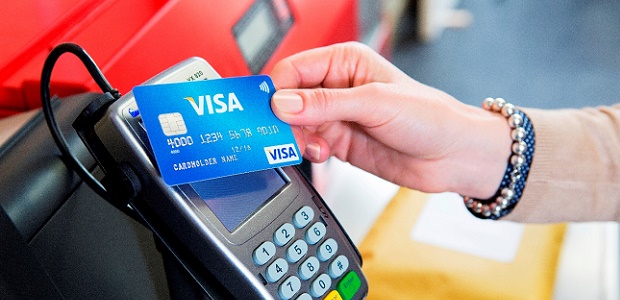
Ten years on from the introduction of contactless cards in the UK, Visa’s annual Digital Payments study released today reinforces the country’s leading position in driving contactless payments. The study of 2,000 consumers in the UK shows that two-thirds (66%) of Brits have used contactless cards to make a payment since they were introduced in September 2007.
„Across the UK, contactless payments have grown in recent years, with a record 34% of card payments using contactless in June 2017. More broadly, the UK is the leading market in Europe in terms of transaction volumes using contactless payments – ahead of Poland, France, Spain and Finland.”, according to the press release.
Millennial shoppers (aged 18-35) have embraced contactless payments most enthusiastically, with over three quarters (76%) making a purchase with their contactless card – up a huge eleven percentage points on 2016 (65%). Over 65s are more tentative when it comes to ‘tap to pay’, 55% of this group have done so, a slight increase on last year’s figure of 52%. The sectors that have seen the greatest uptake of contactless usage are, in general, located on the high street – grocery stores and supermarkets see the highest level of contactless payments, followed by fast food restaurants and, increasingly, commuter transport.
Almost a fifth (16%) of all bank owned contactless payment terminals are located in London, which leads the UK in contactless usage, likely also driven by the successful integration of the technology across the Transport for London network.(According to UK finance, as of May 2017 there were 420,842 bank owned contactless terminals outside the M25 compared to 79,406 inside the M25.)
Four in five (78%) Londoners have made a payment using a contactless debit or credit card, 12 percentage points above the national average. Outside of the ‘London Bubble’, there is the most room for growth in the North West and South West regions of England, where 41% of consumers are yet to make a contactless purchase using their card.
Comfort in using contactless is driving adoption of new payment methods. Just over a quarter (26%) of the country has used a mobile device to pay contactlessly in a shop, rising to 36% among contactless card users. Fifty-seven percent of those who have used contactless cards have also used their mobile devices for online banking, compared with just 35% of non-contactless users. These consumers are also almost twice as likely to have made high value purchases using their mobile device (27% vs 16%).
Kevin Jenkins, Managing Director for Visa UK & Ireland, says: “The introduction of contactless cards in the UK ten years ago was a watershed moment for consumers. Whether buying lunch, commuting without having to top-up, queuing at bars and festivals, or donating to charity, Brits have come to expect a painless payment experience.
“Yet there’s still room for the uptake of contactless to grow, particularly outside London and the South East. Our study shows the appetite for adopting new payment methods is greater than ever and with mobile devices opening up myriad new ways to pay, the next ten years looks set to see contactless payments become an ever greater part of our day to day lives.”
Banking 4.0 – „how was the experience for you”
„To be honest I think that Sinaia, your conference, is much better then Davos.”
Many more interesting quotes in the video below: